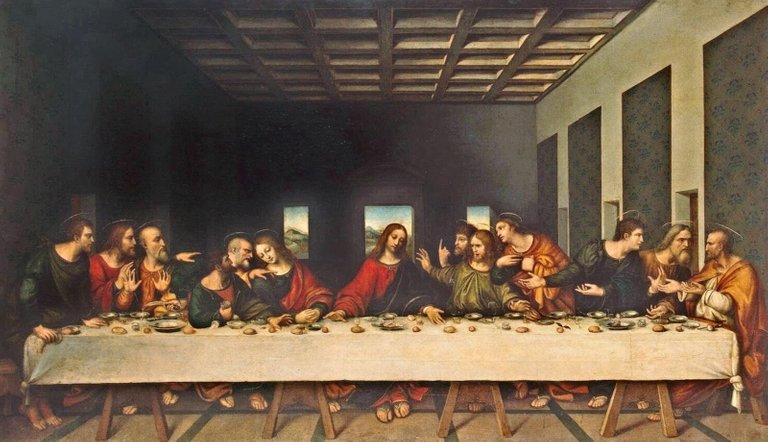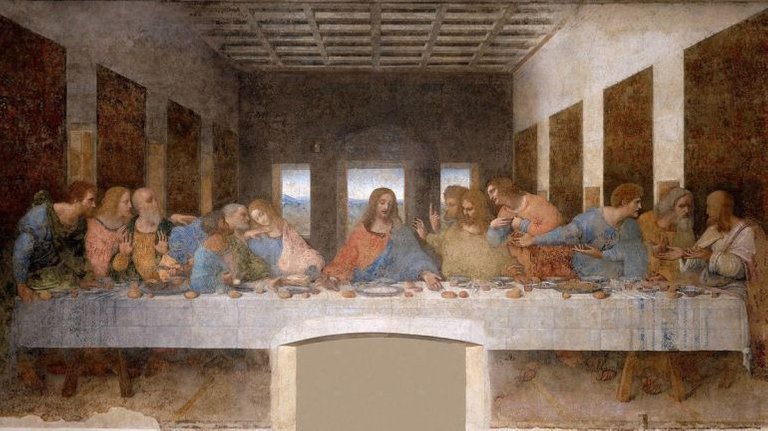La Última Cena fue pintada por Leonardo entre los años 1495 y 1497 en el refectorio del convento milanés de Santa María delle Grazie, siguiendo un encargo del duque Ludovico Sforza. Sus dimensiones son 4,6 por 8,8 metros y se trata de una obra realizada al temple sobre pared, siendo este detalle el empleado con asiduidad para justificar el continuo deterioro de la obra. Sin embargo, los últimos estudios realizados sobre la pintura indican que Leonardo no se equivocó en la técnica utilizada, sino que fueron las condiciones físicas de la pared, excesivamente húmeda, lo que propiciaron la degradación casi inmediata de La Última Cena. Por ello, son numerosas las restauraciones que ha requerido, unas más afortunadas que otras, hasta recibir una definitiva iniciada en el año 1982.
Desde el punto de vista estético, Leonardo pretendió crear en pintura una prolongación imaginaria del refectorio. Para ello, prolongó la arquitectura natural de la estancia con una serie de elementos pictóricos como ventanas, puertas y casetones para crear profundidad en la pared. Sobre el punto de fuga colocó la imagen de Jesús, recortada sobre la luz de la puerta del fondo con el fin de hacer la silueta mucho más visible. Por su parte, los doce apóstoles fueron colocados en grupos de tres, en actitud de vivo diálogo, evocando el momento en el que Jesús anuncia su traición, preguntándose todos los comensales quién de entre ellos ha podido hacer algo semejante.
The last dinner was painted by Leonardo between 1495 and 1497 in the refectory of the Milanese convent of Santa María de las Gracias, following a commission from Duke Ludovico Sforza. Its dimensions are 4.6 by 8.8 meters and it is a work made to the temple on the wall, this detail being used regularly to justify the continuous deterioration of the work. However, recent studies on painting indicate that Leonardo was not wrong in the technique. He used, but it was the physical conditions of the wall, excessively wet, which led to the almost immediate degradation of The Last Supper. Therefore, there are numerous restorations that have required, some more fortunate than others, to receive a definitive initiation in 1982.
From the aesthetic point of view, Leonardo intends to create an imaginary prolonged painting of the refectory. To do this, it extends the natural architecture of the room with a series of pictorial elements such as windows, doors and casetones to create depth in the wall. On the vanishing point he placed the image of Jesus, cut out on the light of the door of the bottom in order to make the silhouette much more visible. For their part, the twelve apostles were placed in groups of three, in an attitude of lively dialogue, evoking the moment in which Jesus announced his betrayal, asking all the guests that they had been able to do something similar. 

Done!
thanks very much!
Votado!
Muchas gracias!
Listo!
Gracias]!
Muy bueno el post. Votado.
Muchas gracias!
genial creo que todos tenemos una pintura de esa en nuestro hogar!!!
Un pedacito de historia... Excelente!